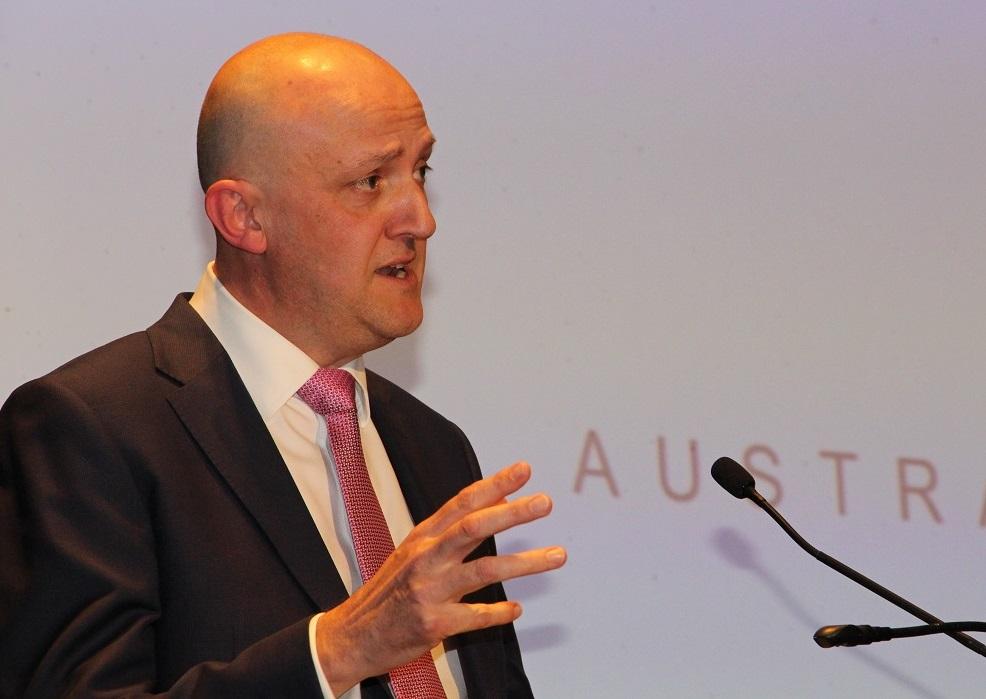
This week saw two significant developments in Australian counterterrorism. Victoria Police arrested two young men and a boy in Melbourne, and charged the two men with planning a terrorist act and one with being a member of Islamic State. Then, Mike Burgess, the director-general of the Australian Security Intelligence Organisation, released his second annual threat assessment.
The arrests demonstrate why ASIO has assessed the terrorist threat level in Australia at probable and reinforce public confidence that our intelligence and law enforcement agencies are well placed to disrupt potential plots.
The bottom line of ASIO’s threat assessment is that things aren’t getting any better. During the Covid-19 pandemic, people worldwide have spent more time at home, online and unhappy with their prospects of long-term economic and social prosperity. This puts those at risk of radicalisation at even greater risk. Extremist groups of all types are capitalising on the situation by increasing their online radicalisation efforts.
For the policing and intelligence agencies charged with preventing attacks and developing policies to counter violent extremism, the big challenge is to understand the characteristics of those who are vulnerable to online radicalisation.
At the launch of this year’s threat assessment, Burgess made a significant change to ASIO’s counterterrorism terminology. From now on, its preference is to categorise violent extremism as ‘religiously motivated’ or ‘ideologically motivated’, rather than as ‘Islamic’ or ‘far-right’, for example. While some have argued that this language change is simply a concession to political correctness, we believe that it affords a more accurate understanding of the radicalisation process. It does not preclude further identification of groups and trends within those categories in political, public and academic discourse.
The new terminology allows for a more precise focus on identifying vulnerable groups and individuals progressing along the radicalisation spectrum online by avoiding unnecessary and divisive debates on the definitions of ‘far-right’ and ‘Islamist’.
So, who are Australia’s budding terrorists, and how can this knowledge be used to prevent radicalisation and disrupt terror plots?
They’re overwhelmingly male, and their average age is 25, though there’s been a significant rise in the number of 15- and 16-year-old boys becoming radicalised. Often these men are socioeconomically disadvantaged and have a sense of alienation and isolation from their local community and of dislocation from the country’s and the world’s broader momentum. Those who are religiously motivated reside mostly in urban areas; those motivated by ideology come from both urban and rural areas.
Understanding why at-risk people feel disenfranchised and see violent extremism as an attractive solution is key to understanding the ‘who’ and ‘why’ of terrorism, and to better enabling intelligence and policing efforts to stop the ‘when’.
Covid-19 has had a strong negative impact on this cohort of at-risk young Australians. A bright future of opportunities has become less tangible. The pandemic has beguiled their sense of agency in determining their own, their community’s and their nation’s future. Collectively, these conditions are fomenting online extremist practice based on some aspect of religion, politics, society or the economy in a community, the country or the wider world. But it isn’t just dissatisfaction; it’s that they see few or no legitimate avenues to voice their opinion or bring about change. Undoubtedly, Covid-19 isolation and boredom have driven many to engage with others on these issues online who might have otherwise pursued non-violent ways to express their frustrations.
The logic behind ASIO’s assessment suggests that we should have seen an increase in the number of women radicalised in Australia, given that those hardest hit by Covid-19-related immediate and long-term job losses are women. Poverty and youth amplify the effects. ASIO’s latest assessment makes no mention of gender.
Understanding the gendered nature of today’s religious and ideologically motivated groups is fundamental to understanding how those who are at risk are attracted and radicalised. And given that women make up half of most communities, it could present options for how valuing the role of women in their lives and communities can play a part in circuit breaking radicalisation. Let’s not ignore the gendered sentiments of Islamic extremism and far-right extremism globally. It’s hard to do so given the repeated targeted murders of women by members of many of these groups over many years, and as recently as this week.
Intelligence and law enforcement’s efforts in keeping Australians safe are one part of addressing this threat. However, we cannot and should not expect policing agencies to address both the effect and the causes of violent extremism any more than they can respond to the causes of domestic and sexual violence.
In today’s Covid-19 world, extremism is an increasingly complex security, social and economic issue, requiring a policy response that addresses multiple and interrelated grievances and inequalities. Perhaps the key here is that those at risk of radicalisation need a tangible sense of a future in which they have a voice, a sense of agency, and the power to change their communities positively.
Having a voice that matters and can effect change can be a circuit-breaker on the path to radicalisation. To this end, at-risk people need to feel part of a community they value, and that values them. This result has nothing to do with law enforcement or intelligence and everything to do with creating stable economic opportunities. Then at-risk youth can believe in and work towards a future worth having.
Given the Covid-19-instigated crisis in youth unemployment, which is likely to last a decade, the Commonwealth and state governments need to urgently increase welfare support and employment pathways for Australia’s youth.
Dismantling the conditions that make radicalisation an attractive pathway for at-risk young people in Australia and giving them a future as valued members of their communities requires a coordinated, cross-portfolio policy response. While this won’t stop all threats, it might just be enough to prevent some from taking the first steps towards radicalisation.